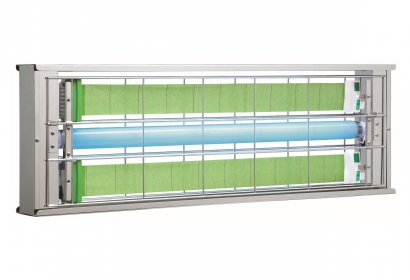ColumnInsect Catchers 2023/03/22
Tips for selecting and installing insect light trap for Factories

The role of the insect light trap
The important things to consider in flying insect pest control are
(1) Prevent insect infestation and (2) Prevent invasion.
Cleaning to prevent insect infestation and taking measures to prevent insect invasion are key actions.
And insect traps are a essential part of taking measures against flying insects.
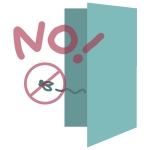
[Column] What is the insect light trap?
https://asahi-packaging.com/what-are-insect-light-traps/
【The main roles of insect light trap】
(1) Catch and kill flying insects
(2) Monitor insect invasion and infestation
(1) Catch and kill flying insects
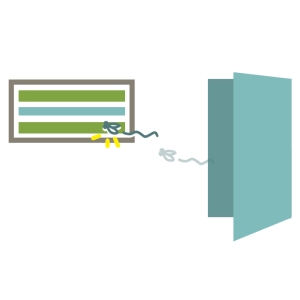
It traps flying insects that invade from outside the building or breed inside.
(2) Monitor insect invasion and infestation
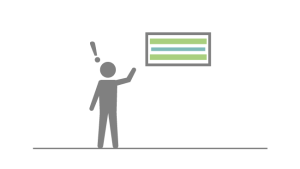
Insect traps can be used as indicators to measure the level of hygiene against flying insects.
You can monitor flying insect inhabitation and invasion by periodically changing the insect trapping tape to check and record the insects that are caught on the tape.
Especially in factories, (2) Monitor insect invasion and infestation is important.
In order to take action against flying insects, the first step is to know the environmental condition of the area.
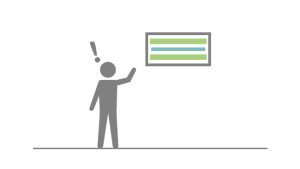
The insect light traps give us information about the insect infestation and invasion of that environment by regularly checking and monitoring the tapes on the traps. In addition, by analyzing the captured insects, we can determine what action we need to take.
Flying insects (e.g., fruit flies) are very small, so the number of insects actually present in the area is usually larger than the number that you feel. (Many customers are surprised when they see the number of insects captured by insect traps.)
Many factories have already taken measures to prevent insect invasion, such as installing equipment to prevent insects from entering the factory. (e.g., shutters, anti-insect PVC strip curtain, anti-insect window films, changing fluorescent lights to LEDs, etc.)
However, it is very difficult to prevent 100% of insect invasion.
By using insect light traps, it is possible to trap the invading insects at an early point and prevent them from entering the inner areas.

For these reason, insect traps have been installed in various factories in many fields, not only in food industry.
Examples: Food factories, beverage manufacturers, meal service centers, Papermaking factories, printing factories, painting factories, chemical factories, chemical factories, plastic factories Wrap/film factories, various package factories, etc.
Tips for selecting and installing insect light trap for Factories
[Table of Contents]
Step 1 Identify insect invasion routes and sources of insect infestation.
Step 2 Determine the specific installation place of the insect light traps.
Step 3 Select the model of insect light traps.
■Step 1 Identify insect invasion routes and sources of insect infestation.

Identify from where insects are entering into your building.
‐For example
・Employee entrances
・Receiving/ Shipping Dock, etc.
It is important to place insect light traps close to the entry routes of insects to prevent them from entering inner areas. By installing insect light traps near the entry points, they can immediately trap the invading insects.
It is also recommended to install insect light traps around wet area or near garbage containers, where insects are often infested.
Step 2 Determine the specific installation place of the insect light traps.
Here are some notes on the installation of insect light traps.
Note 1.
Do not leak the light of the traps to the outside.
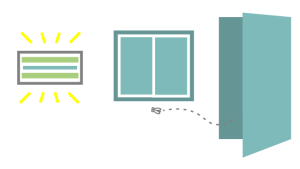

The lamp emits ultraviolet rays (invisible to humans) to attract insects.
If the light leaks outside, it will attract insects from the outside.
Be careful when installing traps near doorways or windows.
Note 2.
Place the insect light traps under 2 meters.
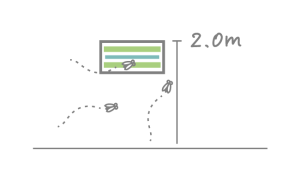
Flying insects (such as small fruit flies) cannot fly that high; they fly around at a height of 2.0 m or less.
In addition, it is inconvenient to replace glue tapes attached to insect light traps if they are installed at a high place.
We recommend that you install the insect light traps at no higher than 2 m for easy replacement of the insect light traps’ tapes and for effective use.
Note 3.
Do not install insect traps near production lines or other areas where there is a risk of insect contamination.
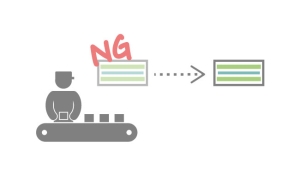
Insect light traps attract insects. Installing insect traps near manufacturing or packaging lines increases the risk of insect contamination. It is dangerous to install insect light traps near things or places that you want to protect from insects. Install the insect traps some distance away and keep insects away from what you want to protect.
Note 4.
Keep traps ON at night. (24 hours a day).
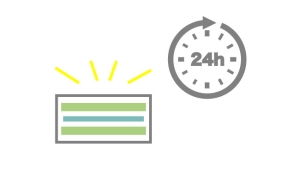
Insect traps are more effective at night when there are no lights around.
▶▶▶Based on these notes mentioned above, consider the specific location of the installation.
There are two main areas to consider here.
■Area 1: Near doorways
-Human and material (products and ingredients) entry/exit points.
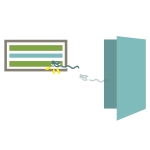
It is necessary to install the insect light traps to capture the invading insects immediately while preventing the light from leaking outside when the door is opened.
In many cases, it is recommended to place insect light traps near the door with the light of the traps facing inward (toward the inside of the building), while preventing the light from leaking outside.
If there a window around the installation site, be careful because the light may also leak outside.
The light leaking out through the window will attract insects to the area.
■Area 2: Inner area beyond the entry point
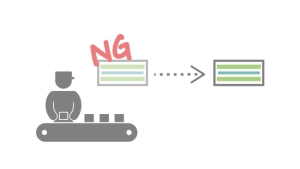
As mentioned above, since insect light traps attract insects, they should not be installed close to area that you want to protect from insects, such as near manufacturing or packaging lines. By installing at least one in each room, the environment can be monitored in order to monitor its environment and to manage the risk.
Step 3.
Select a model of insect light traps.
●Effective area
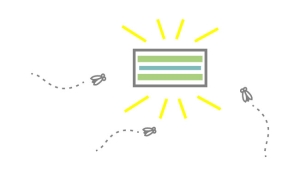
Depending on the insect light traps, there are different ranges that can attract flying insects.
Refer to information in catalogs and other sources for details.
In addition, the larger the watts of the insect traps, the stronger the attraction to insects.
For areas where you wish to have a more hygienic environment, we recommend that you choose a model with a higher watts.
On the other hand, there are also interior-type small insect traps for small spaces such as offices.
Mushipon has a large lineup of products, and you can choose the one that best fits your environment of use.
●Installation location requirements
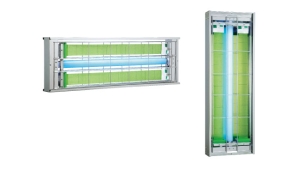
Our standard type of commercial insect light traps are hanging and horizontal types, but wall-mounted and vertical types are also available. Please select the type according to the installation location.
We also offer waterproof and explosion-proof models according to your operating environment, as well as optional power cord extensions and voltage changes for use in overseas factories.
Asahi Sangyo has a long history of exporting insect traps. Please feel free to consult with us about the installation in your overseas factory.
Mushipon does not use any chemicals and it is safe and non-toxic. Insect control measures can be taken without worrying about the effects on the surrounding environment.
Mushipon’s insect light traps use specialized insect trapping tape that has a high insect-capturing performance. Due to its high capturing performance, MUSHIPON has been used in many factories for many years.
If you have any other questions or concerns about insect light traps, please contact us.
▶Contact us
https://asahi-packaging.com/inquiry/
▶[Column]What is the insect light trap?
https://asahi-packaging.com/what-are-insect-light-traps/
▶Product details
https://asahi-packaging.com/genre/insect-trap/
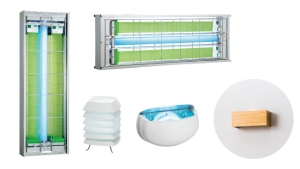
We seek new merchandise for the Japanese market. We would like to help you deliver your products to Japanese customers utilizing our broad sales network in Japan. Contact us by email or the contact form below.
Inquiries by phone
| Packaging, Food Sanitation, Food Processing Devices, and Healthcare products
TEL:+81-52-671-5193 |
TEXTILE INDUSTRY-related
TEL:+81-76-423-8154 |
Inquiry by Email





